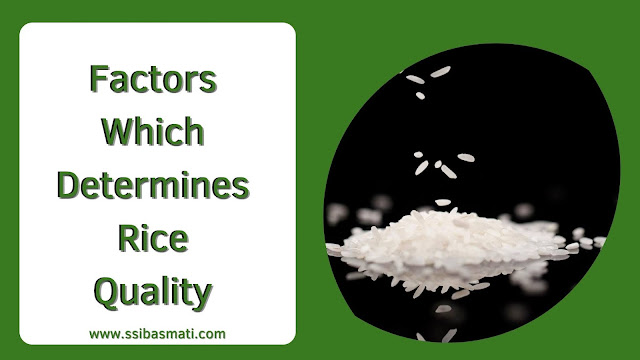Factors Which Determines Rice Quality
When more rice becomes available in the market, consumers' demand for superior quality rice has risen. There is some indication of the significant criteria for rice quality. The grain quality of rice is more complex than other cereals. In almost countries, rice is consumed as whole grain and it serves as a staple food. Quality of rice is not always easy to define as it somehow depends on the consumer. All consumers want the best quality that they can afford.
Rice quality is affected by environmental factors, crop management, and the resulting interactions among these. It involves milling quality, physical appearance like whiteness, etc.
Several interrelated features determine the quality of paddy. These are:
· Milling degree
· Head Rice
· Long and short-grain and its weight
· Cracked grains
· Immature grains
· Discolored/fermented grains and damaged grains
· Whiteness
· Chalkiness
Milling degree
The degree of milling is a measure of the percent bran that removed from the brown rice kernel. Milling degree affects milling recovery and influences consumer acceptance, the color of rice, and also the cooking behavior of rice. Unmilled brown rice does not absorb water properly and does not cook as quickly as milled rice. There is a very little effect when the water absorption rate improves progressively up to about a 25% milling degree.
Head rice
Head rice includes broken kernels that are 70-80% of the whole kernel. One of the most important criteria for measuring milled rice quality is High head rice yield.
Long and short-grain and its weight
The length and width of a rice grain are important features that help to determine the class of the rice. Rice is classified mainly on grain length: short, medium, and long. Besides, grain weight provides information about the size and density of the grain. Grains of various density mills differently are likely to retain moisture differently and cook differently.
These attributes are determined by the environmental weather conditions during production, soil conditions, crop production practices, harvesting, and post-harvest practices.
Cracked grains
Overexposure of mature paddy to fluctuating temperature and moisture conditions causes the development of cracks in the individual kernel. During the milling, cracks in the kernel are the most important factor that contributes to rice breakage. Grains that are cracked either from moisture cycles in the field or rough handling.
Damaged grain
Paddy deteriorates through the biochemical change in the grain, the development of off-odors, and changes in physical appearance. These types of damage are caused by water, insects, and heat exposure.
Whiteness
Whiteness is a combination of various physical characteristics and the degree of milling. In milling, the whitening and polishing can greatly affect the whiteness of the grain. In the process of whitening, the bran layer of the brown rice is removed. In order to improve the appearance of the white rice, polishing is carried out. During polishing, some of the bran particles that give the shining appearance stick to the surface of the rice.
Chalkiness
Chalky grains are softer than translucent grains. Chalky grains are more likely to break during milling. Chalkiness vanishes during the cooking that has no effect on taste or aroma. An interruption causes excessive chalkiness during the final stages of grain filling. Although chalkiness disappears upon cooking and has no direct effect on cooking and eating qualities, excessive chalkiness declines the rice quality.
In this article, we, at 1121 Sella Basmati Rice Suppliers in India aim to provide a significant review of traits of rice quality. Hopefully, this article provided you important information about rice grain.


Comments
Post a Comment